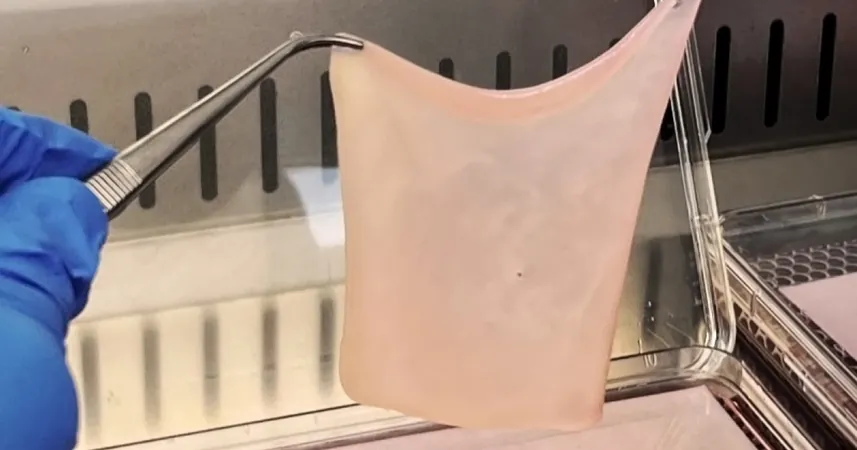
Groundbreaking Bioengineered Skin Developed at Monash University for Burn Victims
2024-11-05
Author: Siti
Introduction
In a revolutionary advancement for burn treatment, researchers at The Alfred and Monash University have engineered a new type of bioengineered skin that significantly reduces the need for traditional skin grafting methods. This innovative technique aims to minimize both the risk of severe infections and the requirement for harvesting healthy skin from unaffected areas of the body, which is standard in conventional treatment protocols.
Major Breakthrough
A major breakthrough was demonstrated when a patient with extensive full-thickness burns received treatment utilizing skin cultivated from his own cells. This remarkable approach not only enhances the healing process but is also expected to lead to better long-term cosmetic results, with minimal scarring.
Expert Insights
Dr. Heather Cleland, a renowned reconstructive plastic surgeon at The Alfred, emphasized the importance of this development, stating, 'The technique is expected to replace the need for traditional donor sites, allowing us to utilize the patient's own cells in a much more effective way.'
The Bioengineering Method
Shiva Akbarzadeh, the group leader at the Skin Bioengineering Laboratory, elaborated on the method, explaining that it involves isolating and expanding the patient’s own skin cells to grow new skin. This personalized approach not only fosters quicker recovery but also engages the body's natural wound repair mechanisms, leading to improved outcomes over time.
Collaboration and Funding
The pioneering trial is a collaborative endeavor between skin cell biologists and reconstructive surgeons, reflecting a significant synergy in medical research. This joint effort has been made possible through funding from the Medical Research Future Fund, underscoring the commitment to advance medical science for the benefit of patients.
Conclusion
As the world watches this groundbreaking research unfold, the implications it holds for the future of burn treatment are profound. Could this be the future of regenerative medicine? Stay tuned as the journey of bioengineered skin continues to evolve, offering hope to countless patients worldwide.



 Brasil (PT)
Brasil (PT)
 Canada (EN)
Canada (EN)
 Chile (ES)
Chile (ES)
 Česko (CS)
Česko (CS)
 대한민국 (KO)
대한민국 (KO)
 España (ES)
España (ES)
 France (FR)
France (FR)
 Hong Kong (EN)
Hong Kong (EN)
 Italia (IT)
Italia (IT)
 日本 (JA)
日本 (JA)
 Magyarország (HU)
Magyarország (HU)
 Norge (NO)
Norge (NO)
 Polska (PL)
Polska (PL)
 Schweiz (DE)
Schweiz (DE)
 Singapore (EN)
Singapore (EN)
 Sverige (SV)
Sverige (SV)
 Suomi (FI)
Suomi (FI)
 Türkiye (TR)
Türkiye (TR)
 الإمارات العربية المتحدة (AR)
الإمارات العربية المتحدة (AR)